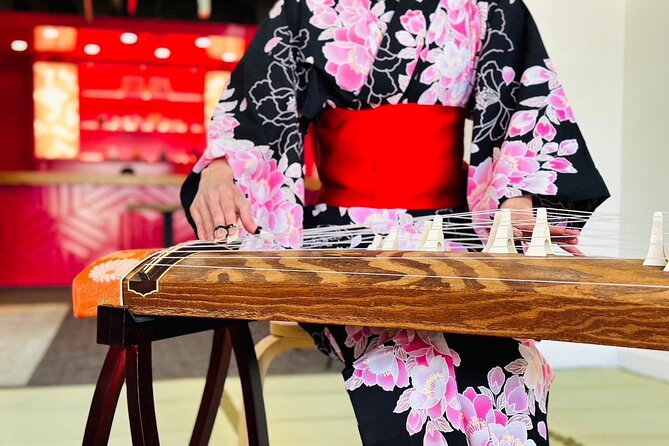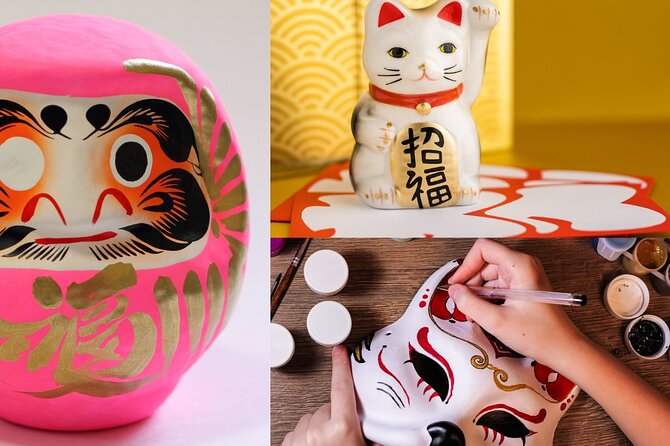Asakusa is an incredibly vibrant destination in Tokyo, Japan that offers a unique blend of traditional culture and modern amenities.
Visiting Asakusa Tokyo is Like Stepping Into Another age. It’s also Tokyo’s Geisha district where Ancient Japanese culture comes to life in front of your eyes.

Located on the eastern side of the Sumida River near downtown Tokyo, Asakusa has been described as having ‘old-Tokyo’ vibes due to its many historical attractions steeped in Japanese tradition.
From shopping at Nakamise Street for souvenirs or experiencing the iconic Sensoji Temple with a view from atop Skytree Tower there are many amazing things you can do when visiting this must-see location.
In this article, I will outline some great activities anyone should experience while exploring one of Japan’s most visited districts – Asakusa.
is Asakusa Worth Visiting?
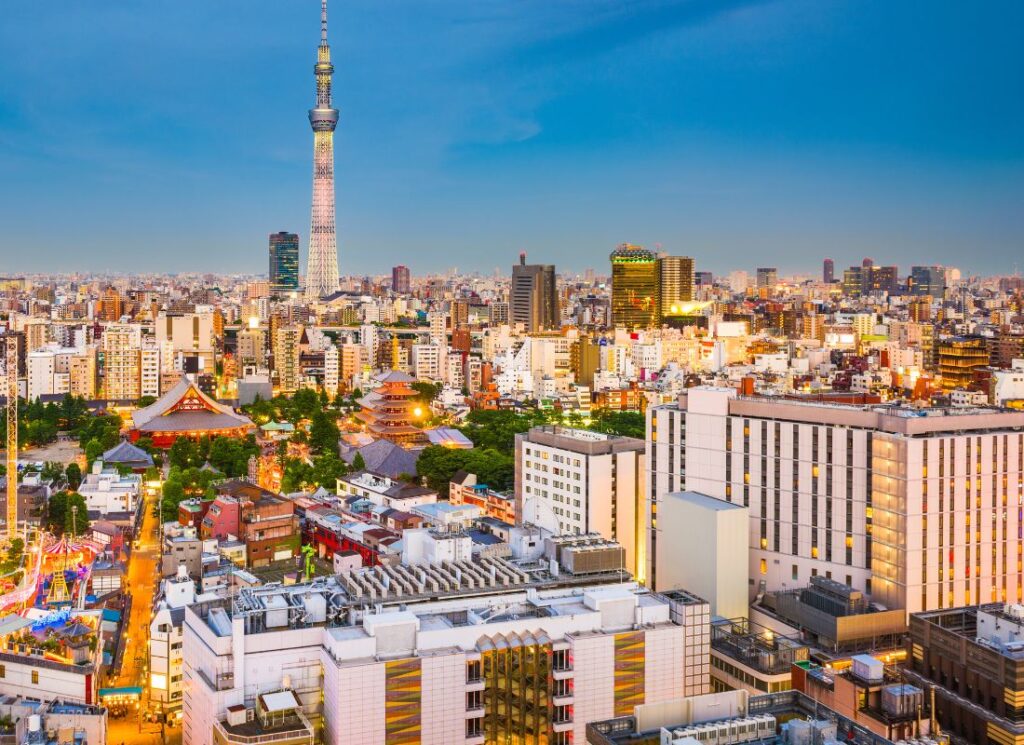
Absolutely. Asakusa is one of the most exciting and colorful places in Tokyo.
In Tokyo, very few buildings have survived the earthquakes and bombings of the last 80 years. The ones that did survive are here – in Asakusa.
So the atmosphere here is all about Japan pre-war.
From traditional festivals to delicious local eateries, it’s worth visiting for its unique blend of ancient history and modern culture.
Things to Do In Asakusa
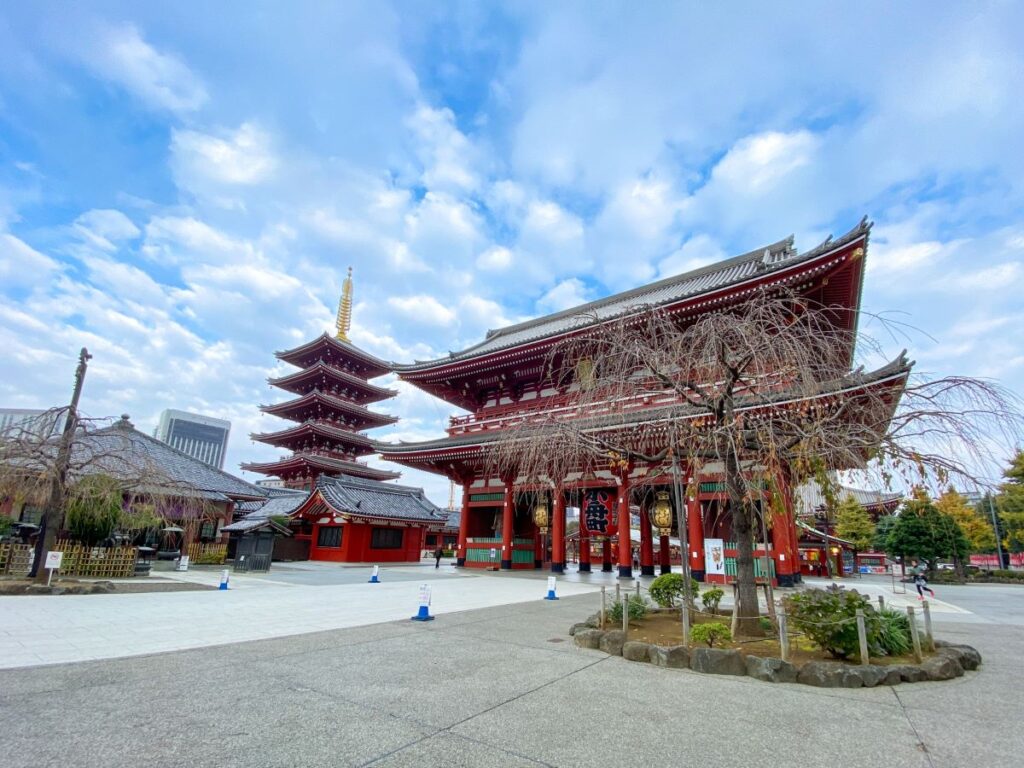
Traditional shops, traditional Japanese houses, Ancient shrines, and Geisha joints.
A great way to explore Asakusa is with a tour guide who can take you through all the major attractions and help you make the most of a short trip.
After seeing Sensō-ji temple you can take a ride on a rickshaw, stroll through Nakamise shopping street, or even take a boat cruise along the Sumida River – all unforgettable experiences that make Asakusa well worth exploring.
But there’s plenty more than this on offer: Here’s our extensive list of all the best things to do in Asakusa both during the day and when the area transforms in the evening
See The Geisha In Kannonura Street
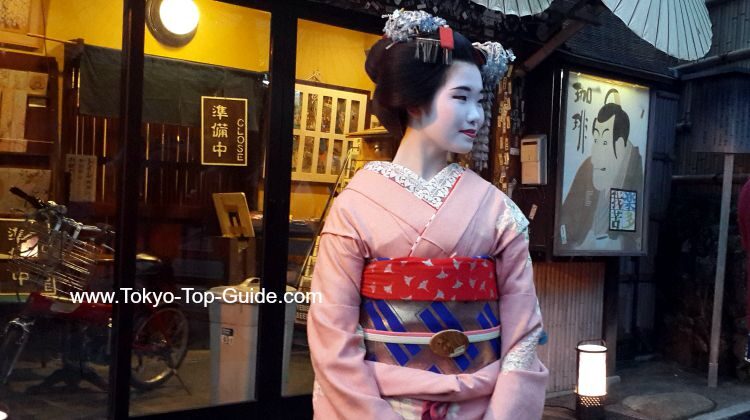
Kannonura Street is one of the few streets in Tokyo where you can still see Geisha in Kimonos and traditional white make-up.
Geishas are traditional entertainers.
If you’d like to see the Geishas perform the Japanese dance, singing, and music they were trained for, the tea houses in Asakusa still have 45 actively working geisha (In Kyoto Geishas are more common).
An evening like that costs around 20,000 yen per customer but can be difficult to see unless you are a regular.
In any case, the Geisha area has a lovely traditional Japanese feel to it, so take a walk down Kannonura Street.
Sensoji Temple
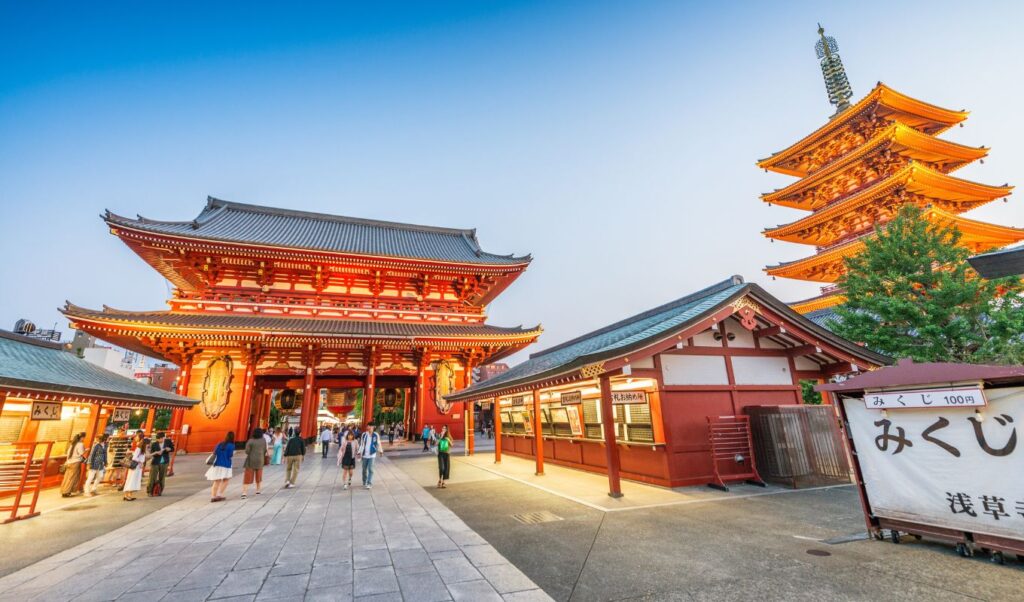
Sensoji Temple dates back to 645, but with the original was destroyed in the air raids in 1945, so today’s building is a reconstruction.
The massive complex was established more than 1,400 years ago to honor Kannon Bosatsu (Goddess of Mercy).
On any given day you can witness thousands of visitors singing traditional Japanese songs or listening to reverent bells ringing from within its red gates.

Whether it’s walking along tree-lined paths surrounding Senso-Ji or taking home your own omikuji fortune paper slip found at Omiya Shrine must be experienced when visiting Sensō–Ji Temple.
Pro Tip: At the top of the steps, it’s a ritual to clap your hands twice and bow your head.
It’s also a custom to make a gift to the gods by throwing coins into the wooden box.
Visit The Kaminari-mon Gate

Kaminarimon Gate is the iconic entrance gate of Asakusa, Tokyo.
It’s known for its giant red paper lantern featuring “Thunder God” that hangs above it in striking contrast to the sky-blue main gates and other colorful decorations on both sides.
Kaminarimon is the first of two large entrance gates leading to Sensoji Temple and was first built more than 1000 years ago. However, the original gate was destroyed in the air raids of 1945, so this is a reconstruction built in 1960.
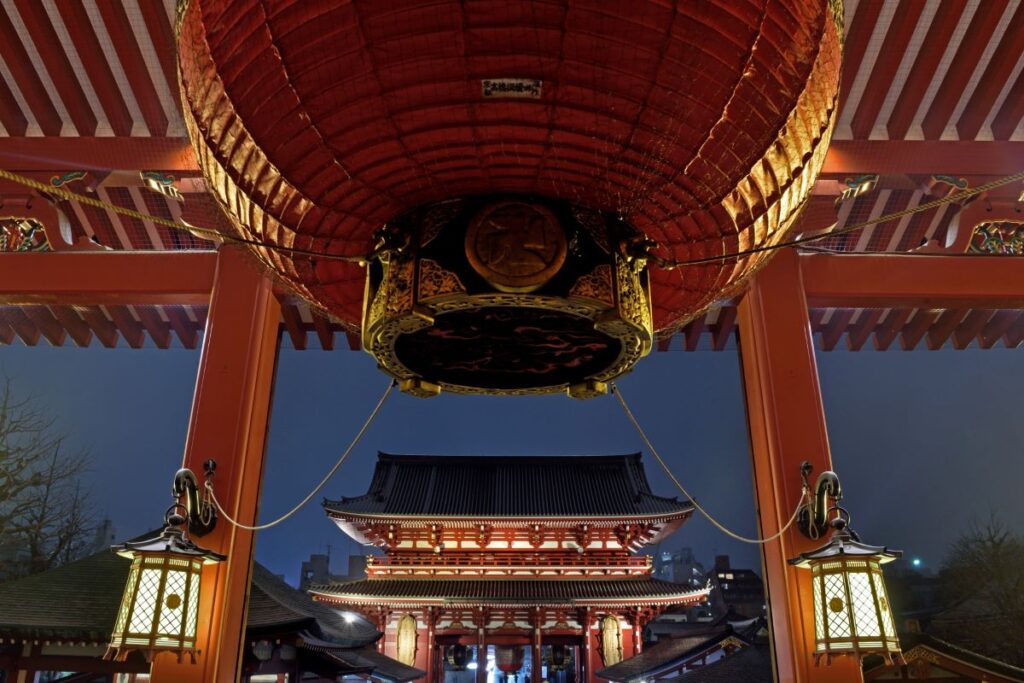
Crowds can also be seen here during any festive season like New Year’s Eve when Shinto priests perform traditional ceremonies with much fanfare at this grand gateway – truly sending visitors off into another world.
The Tourist Information Centre (opposite Kaminarimon gate) with lots of maps and info.
Opening hours are 10:00am to 5:00pm daily.
Fortune Telling
Fortune telling, known as O-mikuji at Sensoji Temple is always a hit.
The custom is to tie a fortune paper to a wooden stand, which will apparently blow away the bad luck.
It’s the perfect way to get some insight into one’s fortunes. Each time you buy a paper slip, it will reveal your luck in categories such as relationships and work life.
Sometimes they even come with special papers that predict future events like finding true love or going on vacation abroad.
Best of all if your fortune isn’t great you can tie it up around the trees for good karma too – so everyone wins.
Asakusa Shrine
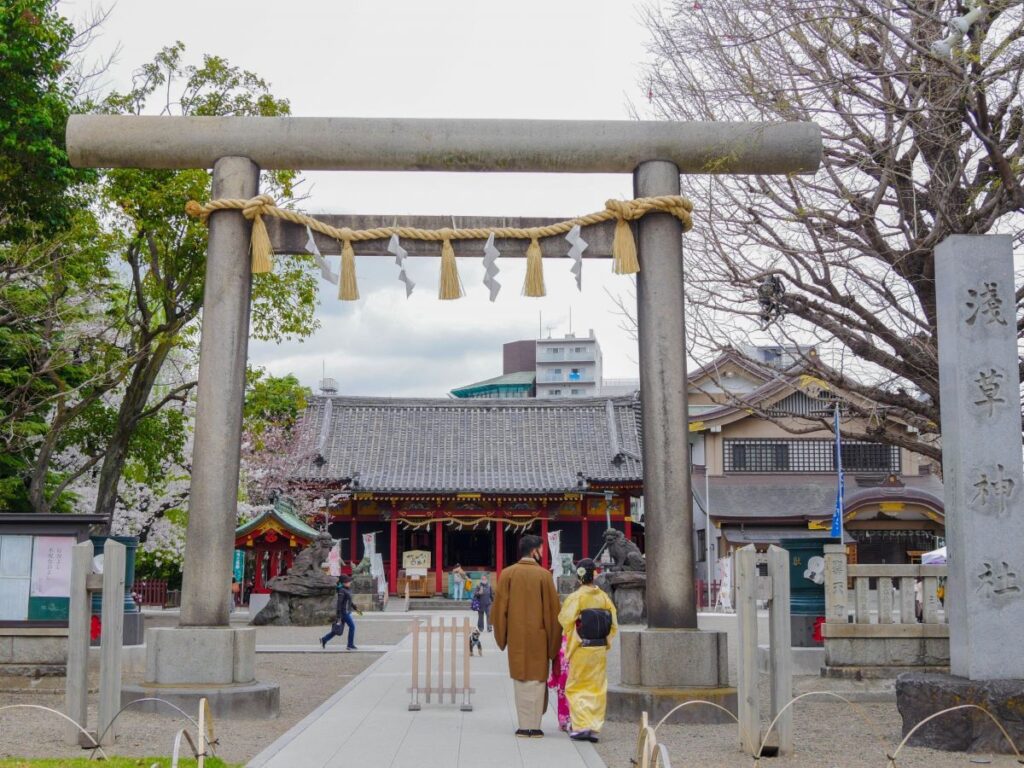
Asakusa Shrine is the only temple that survived the II world war bombings.
With its landmark red gates and temple grounds, the area draws tourists from all over who come to witness rituals like omikoshi processions and Kagura dancing.
Visitors can also buy traditional souvenirs such as lucky charms or paper fortunes known as ‘omikuji’ which makes a great gift.
The shrine’s festival, the Sanja Matsuri is the largest and most popular in Tokyo.
The Hanzomon Gate marks the end of the street.
Shopping In Asakusa

Nakamise Street – A pedestrian street leading to Senso-ji Temple from the Kaminari-mon gate.
The street is lined with souvenir shops and traditional Japanese food stalls.
A great place to stock up on souvenirs for your friends and family.
Shin-Nakamise Shopping Street is a shopping arcade lined with shops and restaurants.
Lots of shops here sell restaurant products, so it’s a good opportunity to stock up on Japanese cups and plates before going home.
Kappabashi Shopping Street has domestic kitchenware stores.
Here you can buy the plastic models of traditional Japanese foods that Tokyo restaurants put in their windows.
Ride a Rickshaw Around Asakusa
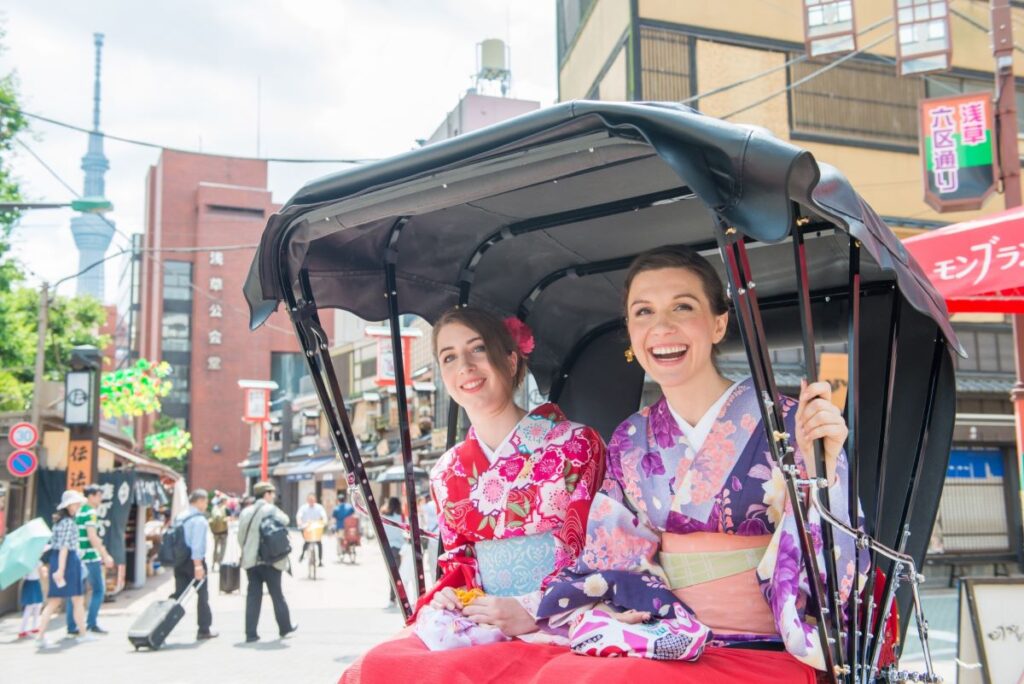
Exploring the streets of Asakusa by rickshaw is an unbeatable experience.
Enjoy a thrilling ride, gliding through narrow alleys and vibrant markets.
Chat with your driver about local attractions – like Kaminarimon Gate or Sensoji Temple – as you pass by.
Take in all that this historic area has to offer without missing any detail. An unforgettable adventure awaits.
Japanese Cooking class in Asakusa
Have you ever wanted to learn how to make amazing Japanese dishes? Then come join our cooking class in Asakusa.
You’ll be guided step by step as we teach you how to make traditional favorites such as miso soup, sushi, yakitori and tempura.
Create your own bento box with succulent flavors for the perfect lunch or dinner experience.
Impress your friends with delicious teriyaki chicken and delight their taste buds with soft mochi desserts afterwards.
Asakusa Culture Tourist Information Center

Asakusa Culture Tourist Information Center is a great place to learn all the scoop on what’s happening around town.
Get your hands on free maps, discover local events and festivals like Sanja Matsuri or Tokyo Skytree Illuminations and get knowledgeable tips from experienced staff.
This center has everything you need for an unforgettable cultural adventure in Asakusa.
Matcha Gelato at Suzukien Asakusa
Suzukien Asakusa offers the most tantalizing Matcha Gelato.
Its unique flavor brings together the creamy sweetness and richness that only real matcha can provide.
Enjoyed alone or with other treats, it’s sure to make your taste buds sing.
Take A Timeout in Sumida Park

Sumida Park is a true oasis in Tokyo and is a great spot to admire beautiful cherry blossoms as well as riverside foliage during the spring season.
There are also some unique attractions like the Sumidagawa Firework Festival that can be enjoyed in the summer.
Cruise The Sumida River

A Sumida River Cruise is an amazing way to see Tokyo from a different perspective.
Hop in a traditional canal boat, or opt for the modern version with panoramic windows.
You’ll glide along the Sumida River and see fascinating views of skyscrapers lit up on both banks as well as ancient bridges and temples like Sensoji Temple.
Enjoy live music performances while you relax onboard – it’s truly a unique experience that can’t be missed.
Take A Night Tour Of Asakusa
Take a night tour of Asakusa for an unforgettable experience.
From the lantern-lit Nakamise shopping street to the Sensoji temple, explore Japan’s ancient capital by twilight.
Konica Minolta Planetarium TENKU

Konica Minolta Planetarium TENKU is an incredible experience for star-gazers of all ages.
With its state-of-the-art projection technologies, it offers a stunningly realistic view into our universe and beyond.
Visitors can explore fascinating phenomena such as galaxies, stars, supernovae or nebulae from up close in vivid colors.
Get Festive During The Sanja Matsuri

The Sanja Matsuri is an exciting festival held annually in Tokyo.
It honors the three guardians of Asakusa Shrine and includes colorful processions, mikoshi (portable shrines), music, food stalls and dancing.
Get ready to enjoy traditional performances such as taiko drums or Edo-style floats covered with luxurious decorations that make it a magnificent spectacle for spectators from all over Japan.
Read more: Asakusa Sanja Matsuri Festival Guide
Rise Up In The Tokyo Skytree

The titanic Tokyo Skytree is a remarkable sight to behold.
It towers 634 meters above the city and lights up at night, making it an iconic image of Tokyo.
The observation deck offers stunning views from its 2 floors – 350m and 450m high, whilst below there are many shopping outlets for visitors.
What’s more; it even houses sushi restaurants inside its towering structure that overlooks the Sumida River.
Read More: Tokyo Sky Tree: Guide To The World’s Tallest Tower
Walk Along Nakamise-Dori Street
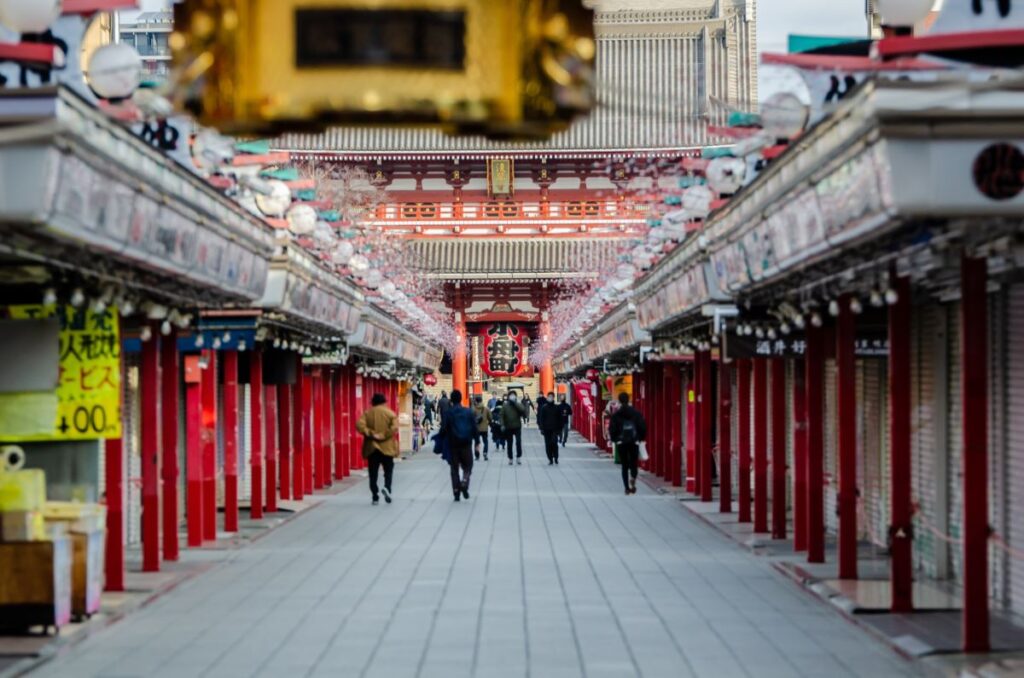
Nakamise-dori Street is an exciting shopping street located near Tokyo’s Asakusa district.
It dates back to the Edo era and features hundreds of shops selling traditional Japanese snacks, souvenirs as well as apparel.
Enjoy a stroll down this bustling path filled with delicious treats such as Kaminari Okoshi, a sweet snack made from rice flour or Tawashi Manju -muffin shaped cakes stuffed with red bean paste.
There are also unique items like Samurai masks and colorful folding fans that make great gifts for friends back home.
Don’t forget to explore all the hidden gems in Nakamise-dori; you never know what interesting discovery awaits around every corner.
Kappabashi Street For All Things ‘Cooking’
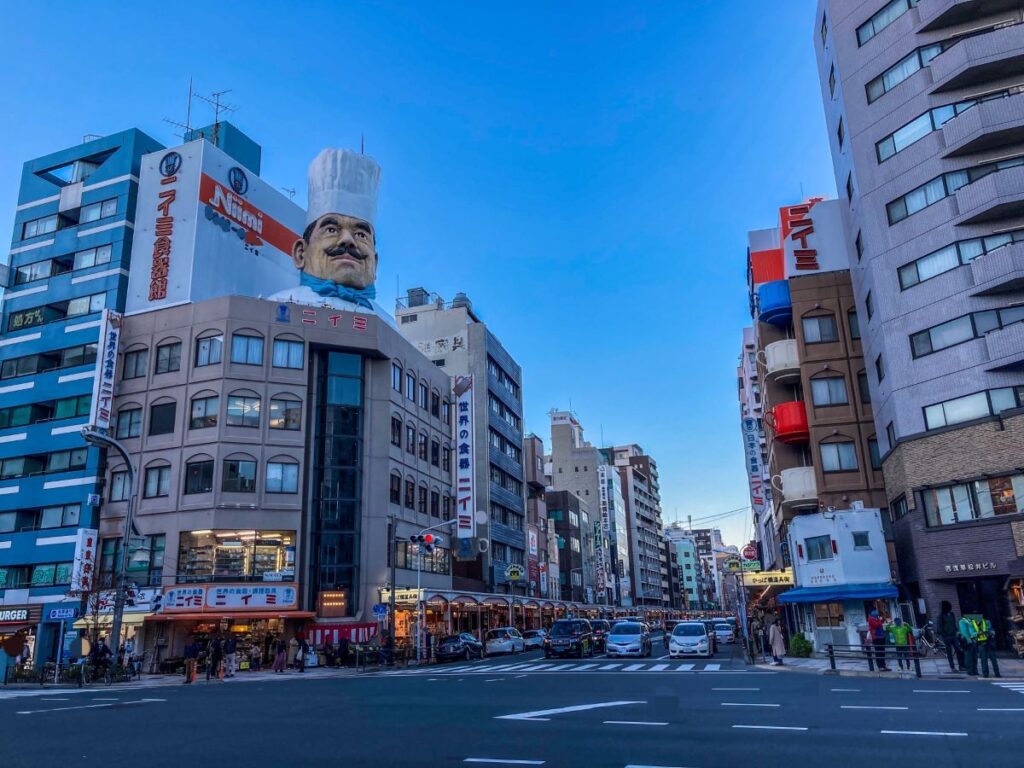
Kappabashi Street in Asakusa is an absolute must-see for any foody visiting Tokyo.
With its many shops offering a vast selection of restaurant supplies and cooking paraphernalia it’s like stepping back into the old days of Japan.
From traditional pottery, and unusual Japanese kitchen tools such as rice paddles or rice scoops there are plenty of exciting goodies on offer here.
Of course, don’t forget about their specialty – realistic plastic food samples used to display dishes in restaurants around town – these make great souvenirs too.
Have A Kimono Experience In Asakusa
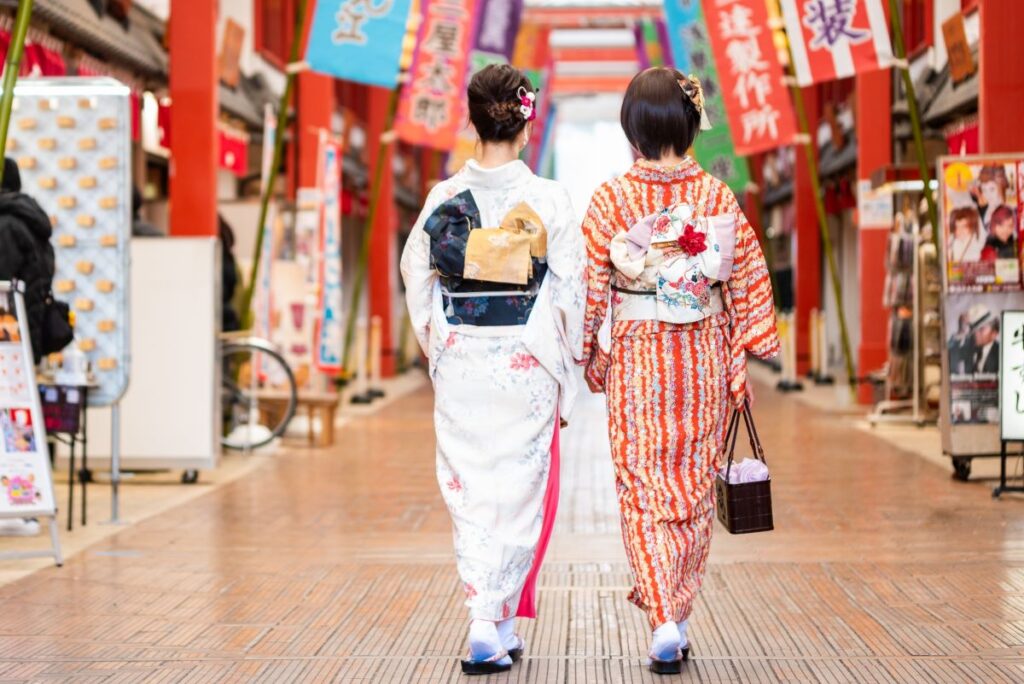
Kimono experience in Asakusa is a must-do.
Start your day in Asakusa by stepping into an exquisite kimono shop, and be transformed with beauty.
Marvel at the vivid colors of Nishijin textiles, explore Japanese fashion trends or rent out casual everyday styles.
You’ll feel like royalty as you walk around Senso-ji temple steps with grace while wearing one of these traditional garments.
Drink with the locals on Hoppy Street

Every night in Asakusa, Hoppy Street is the place to be.
The locals buzz with energy as they laugh and drink together.
For an authentic experience, try visiting one of their favorite haunts for a cold beer or sake-infused cocktail.
Or take your pick from street stalls selling traditional Japanese snacks like yakitori and taiyaki — washed down with regional specialties such as Tokyo’s own Highball whisky soda.
Join this lively night scene to mingle with local friends over drinks: it’ll be sure to make lasting memories that you’ll never forget.
Check Out Sumida Aquarium

Sumida Aquarium is just next to the Skytree and is a fun and captivating experience for the whole family.
With over 100 exhibits, it’s no wonder it has become one of Japan’s most popular tourist attractions.
Filled with eye-catching displays of vibrant sea life, this aquarium provides hours of entertainment as guests explore its many interactive experiences such as feeding dolphins and belugas or watching shows like Sea Lion Show.
Not to mention you can even witness strange creatures including deep-sea fish that twinkle in the dark at their special bioluminescence area.
Asahi Beer Building And The ‘Golden Turd’

The Asahi Beer Building is a fun and interesting piece of architecture.
Its attractive design resembles the frothy head on top of an icy cold beer glass – making it one of the most iconic landmarks throughout Asia.
Its curved walls evoke both modernity and tradition at once; perfect for anyone looking to experience a little bit of culture when visiting this amazing country.
But it’s known more for its “Golden Flame” perched on top that has been renamed by unimpressed locals to the “Golden Turd”. Perhaps the team at Asahi had a bit too much of their own product when they came up with this design.
Edo Taitō Traditional Crafts Museum

The Edo Taitō Traditional Crafts Museum is an amazing place to explore the unique and historic craftsmanship of Tokyo.
From wooden kabuki masks, paper umbrellas, lacquerware and pottery; there’s something for everyone here.
You can even watch a live demonstration from skilled artisans as they work on some intricate pieces that will be treasured by many generations to come.
If you’re feeling creative yourself then join one of their workshops such as woodworking or dyeing so you can bring your own piece home with you – it promises to be both educational and enjoyable.
Recommended Restaurants In Asakusa
Chinya – (left of Kaminarimon Gate) An old establishment from 1880 in a new building, serving excellent sukiyaki, shabu-shabu, and set lunches or dinners.
An English-language menu is available.
A good choice.
Jidaiya – (On Misuji Dori) You’ll have to bend to enter through the Edo-style front door and you’ll feel transported to Ancient Japan.
The English-language menu offers kaiseki, tempura, sukiyaki, shabu-shabu, tempura and nabe.
They accept credit cards.
Mugitoro – (2-2-4 Kaminarimon st, From Sensoji Temple, walk to Komagata-Bashi Bridge.
Mugitoro is beside the bridge on Edo Dori st., next to a tiny temple).
This restaurant specializes in tororo-imo (yam) kaiseki which is included in almost all the dishes.
The lunch buffet is offered until 1 pm, includes fish or beef, yam in some form, vegetables, miso soup, and rice, and costs only ¥1,000.
Festivals In Asakusa
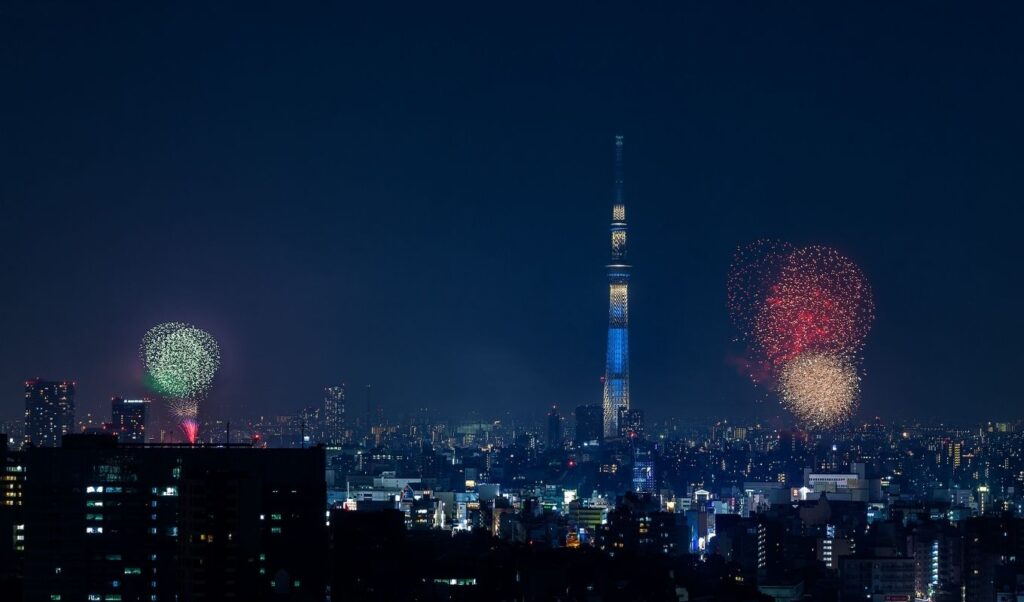
Asakusa is a vibrant district of Tokyo filled with exciting festivals throughout the year.
One of the best and most popular ones is the Sanja Matsuri, an event that honors three local deities held annually over 3 days in May.
It’s known for its colorful processions featuring participants dressed in traditional costumes carrying mikoshi shrines through narrow alleys to nearby temples.
Also, there’s Sumida River Fireworks Festival which celebrates summer each July bringing thousands together along both banks as they admire beautiful pyrotechnics illuminating the night sky above them.
Whatever your preference Asakusa has something special to offer during any occasion or season.
Subways
- Ginza Subway Line
- Toei Asakusa Subway Line
- Tsukuba Express Line
Sumida River Cruise sightseeing ships operate every 30 to 60 minutes from the wharf – and just a five-minute walk from the temple.
They go through Hama-Rikyu Japanese Garden to Hinode Pier, where you can transfer to a ship to Odaiba.
See Also: Tokyo Subway and Subway Map

